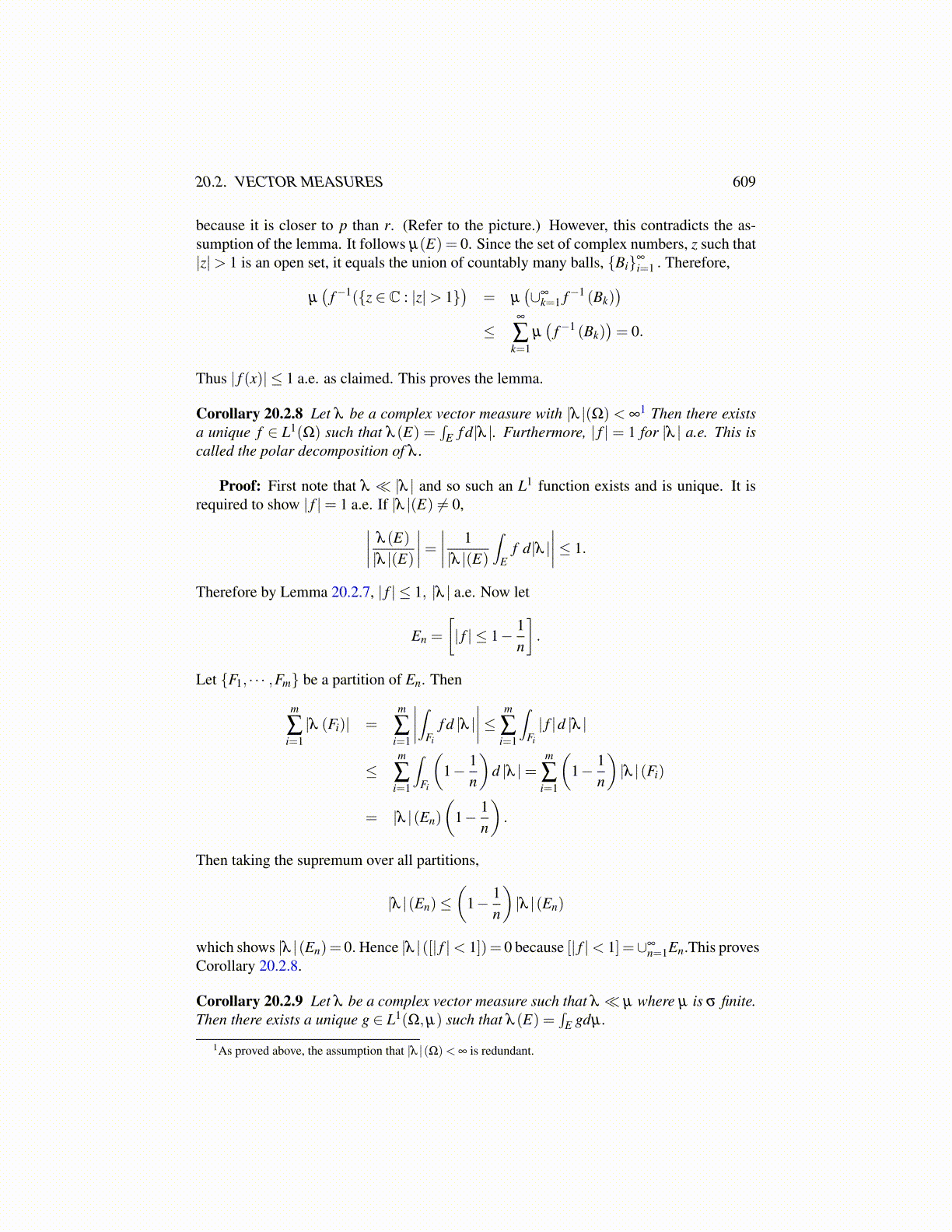
20.2. VECTOR MEASURES 609
because it is closer to p than r. (Refer to the picture.) However, this contradicts the as-sumption of the lemma. It follows µ(E) = 0. Since the set of complex numbers, z such that|z|> 1 is an open set, it equals the union of countably many balls, {Bi}∞
i=1 . Therefore,
µ(
f−1({z ∈ C : |z|> 1})
= µ(∪∞
k=1 f−1 (Bk))
≤∞
∑k=1
µ(
f−1 (Bk))= 0.
Thus | f (x)| ≤ 1 a.e. as claimed. This proves the lemma.
Corollary 20.2.8 Let λ be a complex vector measure with |λ |(Ω) < ∞1 Then there existsa unique f ∈ L1(Ω) such that λ (E) =
∫E f d|λ |. Furthermore, | f | = 1 for |λ | a.e. This is
called the polar decomposition of λ .
Proof: First note that λ ≪ |λ | and so such an L1 function exists and is unique. It isrequired to show | f |= 1 a.e. If |λ |(E) ̸= 0,∣∣∣∣ λ (E)
|λ |(E)
∣∣∣∣= ∣∣∣∣ 1|λ |(E)
∫E
f d|λ |∣∣∣∣≤ 1.
Therefore by Lemma 20.2.7, | f | ≤ 1, |λ | a.e. Now let
En =
[| f | ≤ 1− 1
n
].
Let {F1, · · · ,Fm} be a partition of En. Then
m
∑i=1|λ (Fi)| =
m
∑i=1
∣∣∣∣∫Fi
f d |λ |∣∣∣∣≤ m
∑i=1
∫Fi
| f |d |λ |
≤m
∑i=1
∫Fi
(1− 1
n
)d |λ |=
m
∑i=1
(1− 1
n
)|λ |(Fi)
= |λ |(En)
(1− 1
n
).
Then taking the supremum over all partitions,
|λ |(En)≤(
1− 1n
)|λ |(En)
which shows |λ |(En) = 0. Hence |λ |([| f |< 1]) = 0 because [| f |< 1] = ∪∞n=1En.
Corollary 20.2.9 Let λ be a complex vector measure such that λ ≪ µ where µ is σ finite.Then there exists a unique g ∈ L1(Ω,µ) such that λ (E) =
∫E gdµ .
1As proved above, the assumption that |λ |(Ω)< ∞ is redundant.